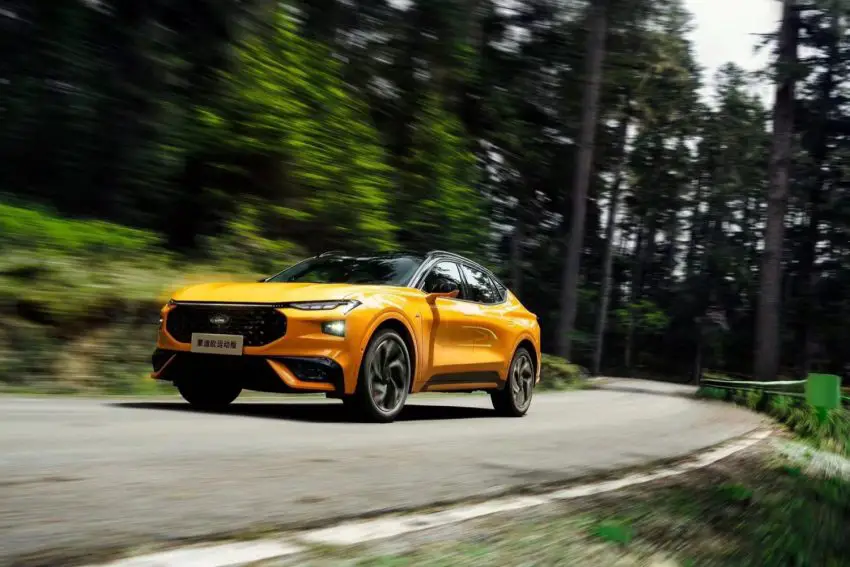The China Market Hurdle: Luxury Automakers Face Growing Headwinds

Table of Contents
Intensifying Competition from Domestic Brands
The rise of domestic Chinese luxury car brands poses a significant threat to established international players. Brands like Nio, Xpeng, and Li Auto are rapidly gaining market share, leveraging several key competitive advantages. Their success is largely attributed to:
- Aggressive pricing strategies: Domestic brands often offer comparable features and technology at lower price points than their international counterparts, making them highly attractive to price-sensitive Chinese consumers.
- Superior understanding of Chinese consumer preferences: These brands possess an intimate knowledge of local tastes, cultural nuances, and evolving consumer demands, allowing them to tailor their products and marketing efforts effectively.
- Rapid technological advancements in domestic EVs: Chinese EV manufacturers are at the forefront of technological innovation, frequently introducing cutting-edge features and technologies before international competitors. This includes advancements in battery technology, autonomous driving capabilities, and connectivity features.
- Government support for domestic automakers: The Chinese government actively promotes the growth of its domestic auto industry through various incentives, subsidies, and favorable regulations.
Shifting Consumer Preferences and Demands
The Chinese luxury car buyer is evolving. Traditional notions of luxury are being redefined, with a growing emphasis on technology, sustainability, and personalized experiences. Key shifts include:
- Demand for electric vehicles (EVs) and hybrid models: Environmental awareness and government initiatives are driving a surge in demand for eco-friendly vehicles. Luxury automakers must offer compelling EV and hybrid options to remain competitive.
- Focus on digital connectivity and in-car technology: Chinese consumers expect seamless integration of technology into their vehicles, including advanced infotainment systems, sophisticated driver-assistance features, and robust connectivity options.
- Preference for personalized and customized services: The desire for bespoke experiences is growing, demanding tailored services, exclusive events, and customized vehicle configurations.
- Increased importance of brand storytelling and social responsibility: Consumers are increasingly drawn to brands that align with their values and demonstrate a commitment to social and environmental responsibility. Effective brand storytelling and authentic engagement are crucial.
Economic and Geopolitical Uncertainties
The China market is not without its economic and geopolitical uncertainties. Factors such as economic slowdown, trade tensions, and fluctuating government regulations significantly impact the automotive sector. These challenges include:
- Impact of fluctuating currency exchange rates: Exchange rate volatility creates uncertainty for pricing and profitability.
- Potential for increased tariffs and trade restrictions: Geopolitical tensions can lead to increased trade barriers, impacting the cost and availability of imported vehicles and parts.
- Challenges related to data security and privacy regulations: Stringent regulations regarding data collection and usage require careful navigation and compliance.
- Uncertainty surrounding future government policies: Changes in government policies can significantly impact market access, investment decisions, and overall business operations. Supply chain disruptions further add to the complexities.
Strategies for Success in the Challenging China Market
Successfully navigating the China market hurdle requires a proactive and adaptable approach. Luxury automakers must adopt strategies that address the challenges outlined above. Key strategies include:
- Developing China-specific models and features: Tailoring vehicles to meet the unique preferences and needs of Chinese consumers is paramount. This includes designing vehicles with features specifically targeted at the local market.
- Investing in local production and supply chains: Establishing local manufacturing facilities and forging strong partnerships with local suppliers can reduce costs, enhance efficiency, and improve responsiveness to market demands.
- Utilizing digital marketing and social media effectively: Reaching Chinese consumers requires a strong digital presence and a sophisticated understanding of social media marketing strategies.
- Collaborating with local partners for distribution and sales: Partnering with established local distributors and dealers can provide invaluable market access and insights.
Conclusion: Overcoming the China Market Hurdle for Luxury Automakers
The China luxury car market presents significant challenges, including intensifying competition from domestic brands, evolving consumer preferences, and economic uncertainties. However, the potential rewards for those who successfully adapt and navigate this complex landscape are substantial. By embracing localization, leveraging technological innovation, and understanding the nuances of the Chinese market, luxury automakers can overcome the China market hurdle and achieve lasting success. To delve deeper into specific strategies and best practices for navigating this dynamic market, we encourage further research and exploration of successful market entry strategies. Consider exploring related articles or consulting with experts in China market entry for additional insights on tackling this significant challenge.

Featured Posts
-
 Will Canadian Tires Acquisition Of Hudsons Bay Succeed A Cautious Assessment
May 19, 2025
Will Canadian Tires Acquisition Of Hudsons Bay Succeed A Cautious Assessment
May 19, 2025 -
 Bilateral Relations Under Strain Indias Recent Import Restrictions On Bangladesh
May 19, 2025
Bilateral Relations Under Strain Indias Recent Import Restrictions On Bangladesh
May 19, 2025 -
 Aileler Ve Gencler Icin 2025 Nevresim Takimi Modelleri Ve Trendleri
May 19, 2025
Aileler Ve Gencler Icin 2025 Nevresim Takimi Modelleri Ve Trendleri
May 19, 2025 -
 Sabics Gas Business Ipo Exploring Saudi Arabias Energy Future
May 19, 2025
Sabics Gas Business Ipo Exploring Saudi Arabias Energy Future
May 19, 2025 -
 United Kingdoms 19th Place In Eurovision Song Contest 2025
May 19, 2025
United Kingdoms 19th Place In Eurovision Song Contest 2025
May 19, 2025
Latest Posts
-
 The Second Best Night Of Your Life Brett Goldsteins New Show Gets A Premiere Date
May 19, 2025
The Second Best Night Of Your Life Brett Goldsteins New Show Gets A Premiere Date
May 19, 2025 -
 Kristen Stewarts Satin Suit At Cannes 2025 Premiere Of The Chronology Of Water
May 19, 2025
Kristen Stewarts Satin Suit At Cannes 2025 Premiere Of The Chronology Of Water
May 19, 2025 -
 Brett Goldstein Premiere Date Revealed For The Second Best Night Of Your Life
May 19, 2025
Brett Goldstein Premiere Date Revealed For The Second Best Night Of Your Life
May 19, 2025 -
 The Chronology Of Water A Review Of Stewarts Directorial Debut And Poots Performance
May 19, 2025
The Chronology Of Water A Review Of Stewarts Directorial Debut And Poots Performance
May 19, 2025 -
 Review The Chronology Of Water Kristen Stewarts Captivating Performance
May 19, 2025
Review The Chronology Of Water Kristen Stewarts Captivating Performance
May 19, 2025
